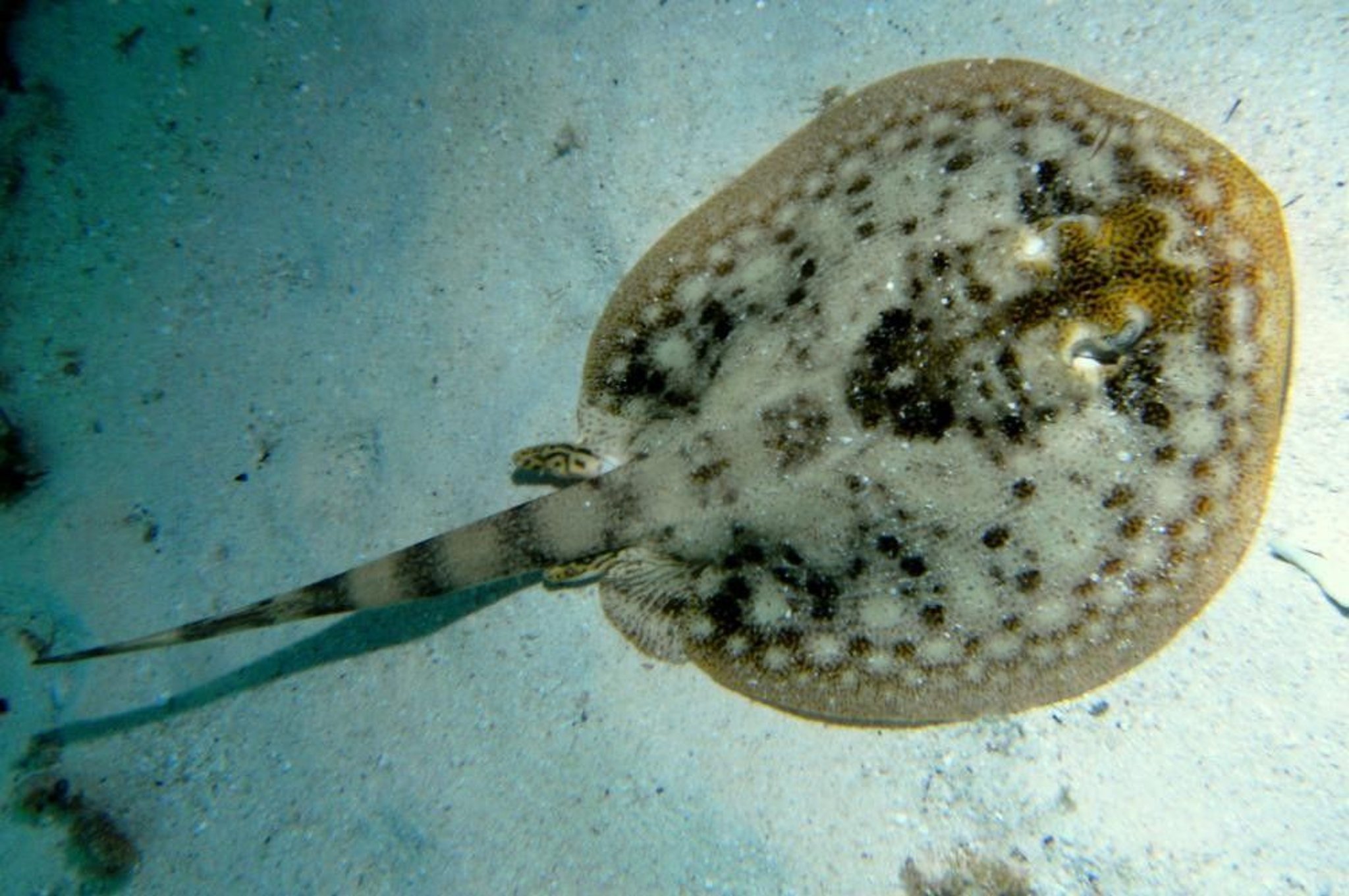Photo courtesy of Thomas Arnold, MD.
The incidence of stingray stings is unknown, but most cases are not reported. Venom is contained in one or more spines on the dorsum of the animal’s tail. Injuries usually occur when an unwary swimmer wading in ocean surf, bay, or backwater steps on a stingray buried in the sand and provokes it to thrust its tail upward and forward, driving the dorsal spine (or spines) into the patient’s foot or leg. The integumentary sheath surrounding the spine ruptures, and the venom escapes into the patient’s tissues.
Symptoms and Signs of Stingray Stings
The main symptom of a stingray sting is immediate severe pain. Although often limited to the injured area, the pain may spread rapidly, reaching its greatest intensity in < 90 minutes; in most cases, pain gradually diminishes over 6 to 48 hours but occasionally lasts days or weeks. Syncope, weakness, nausea, and anxiety are common and may be due, in part, to peripheral vasodilation. Lymphangitis, vomiting, diarrhea, sweating, generalized cramps, inguinal or axillary pain, respiratory distress, and death have been reported.
The wound is usually jagged, bleeds freely, and is often contaminated with parts of the integumentary sheath. The edges of the wound are often discolored, and some localized tissue destruction may occur. Generally, some swelling is present. Open wounds are subject to infection.
Treatment of Stingray Stings
Irrigation and debridement
Stingray stings to an extremity should be gently irrigated with salt water in an attempt to remove fragments of spine, glandular tissue, and integument. The spine should be removed in the field only if it is superficially embedded and is not penetrating the neck, thorax, or abdomen or creating a through-and-through injury of a limb. Significant bleeding should be staunched with local pressure. Warm water immersion, although recommended by some experts, has not been verified as an effective early treatment for stingray injuries.
In the emergency department, the wound should be reexamined for remnants of the sheath and debrided; a local anesthetic may be given as needed. Embedded spines are treated similarly to other foreign bodies. Patients stung on the trunk should be evaluated closely for puncture of viscera. Treatment of systemic manifestations is supportive. Tetanus prophylaxis should be given (see table Tetanus Prophylaxis in Routine Wound Management), and an injured extremity should be elevated for several days. Use of antibiotics and surgical wound closure may be necessary.

